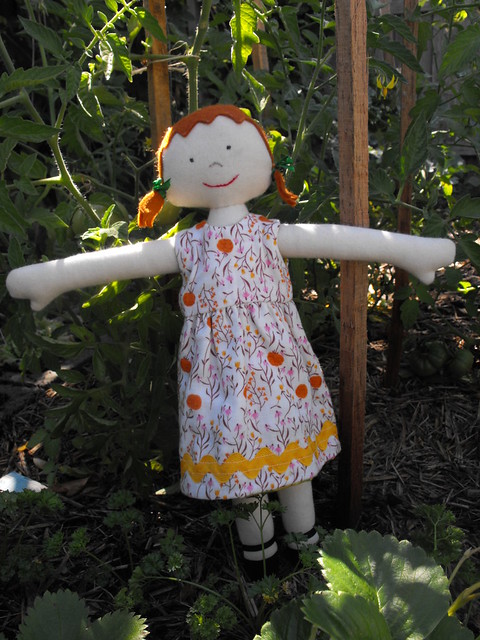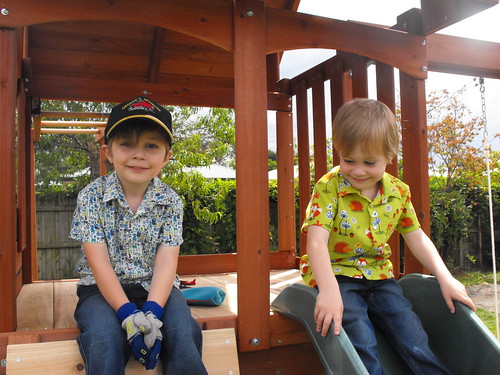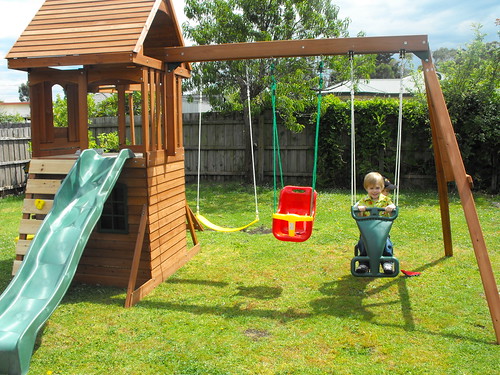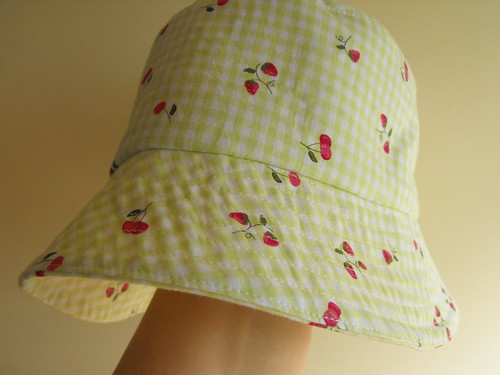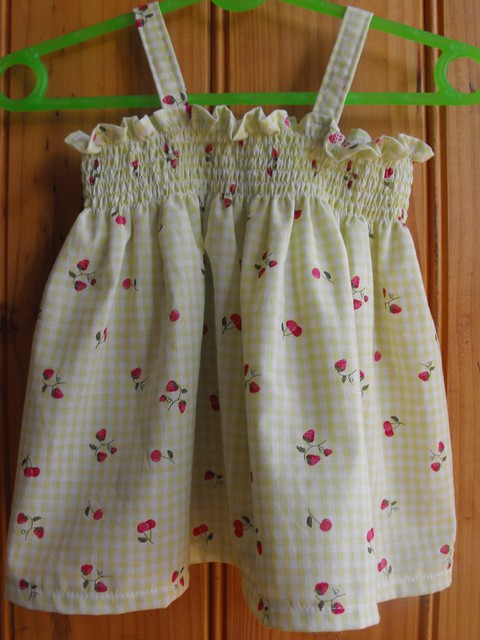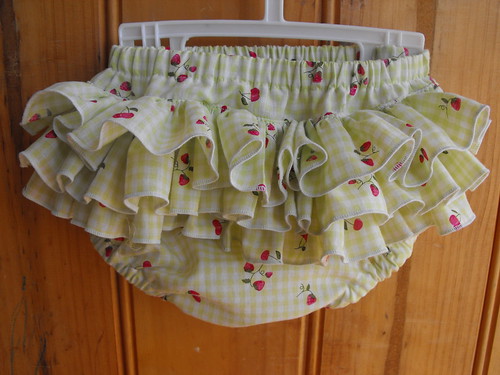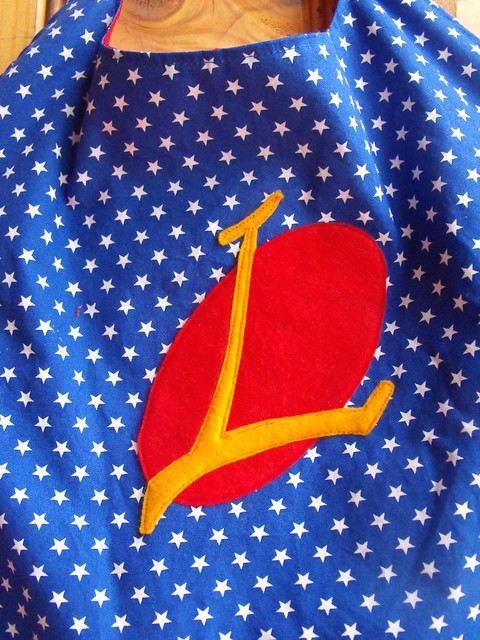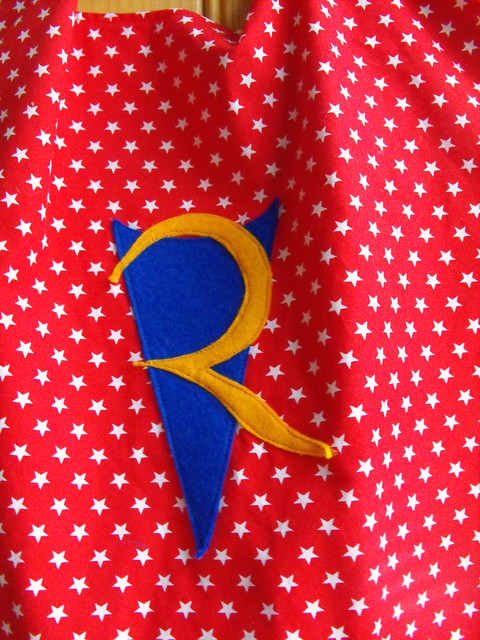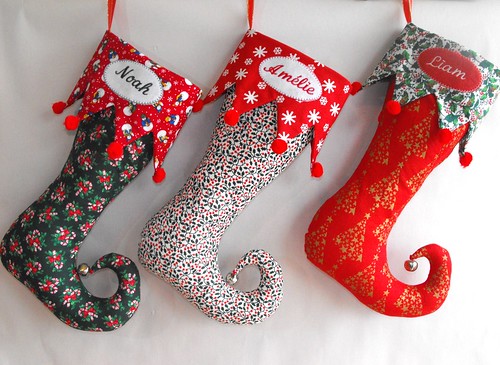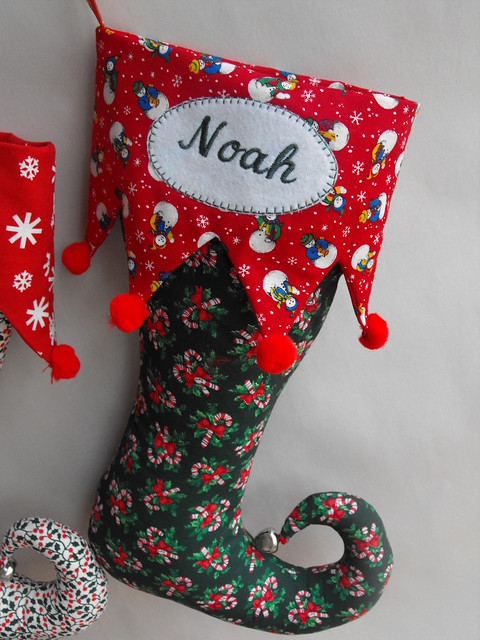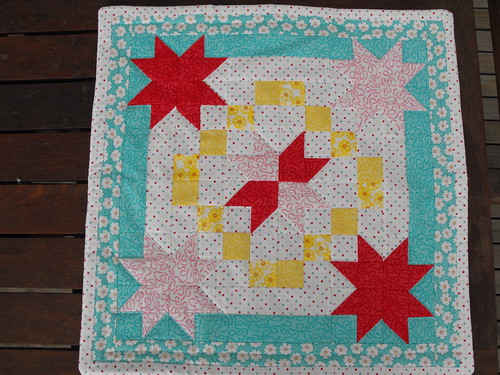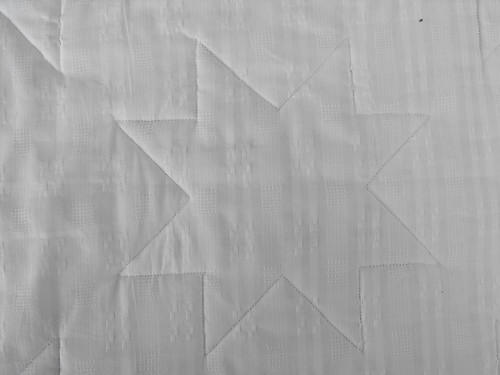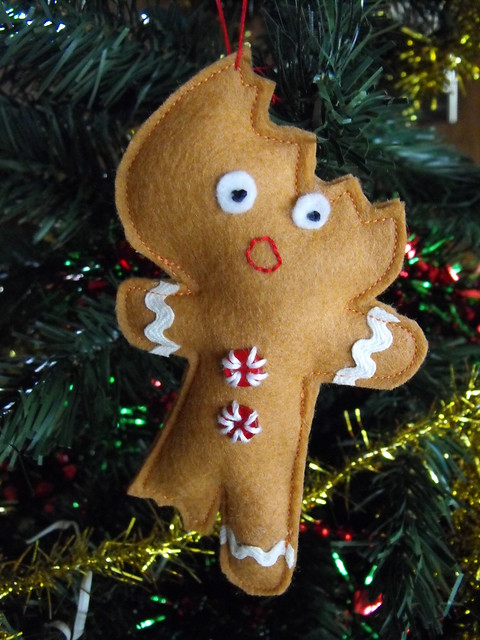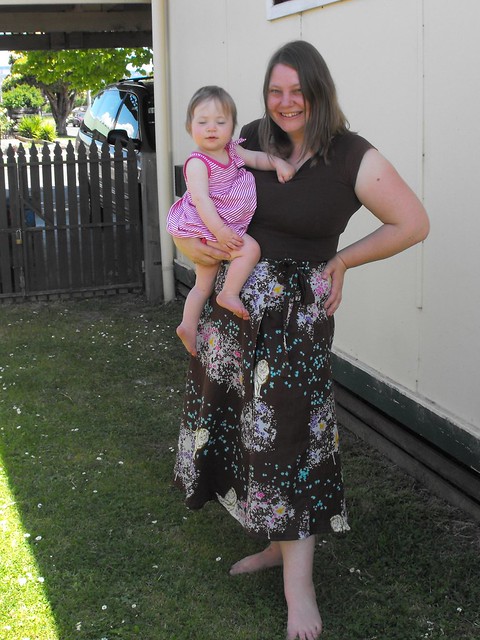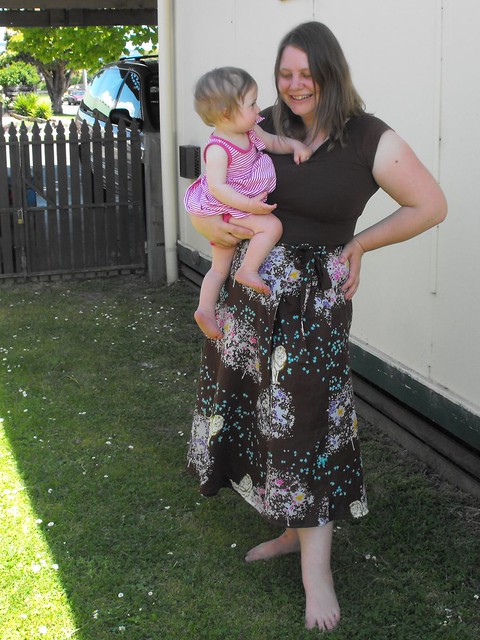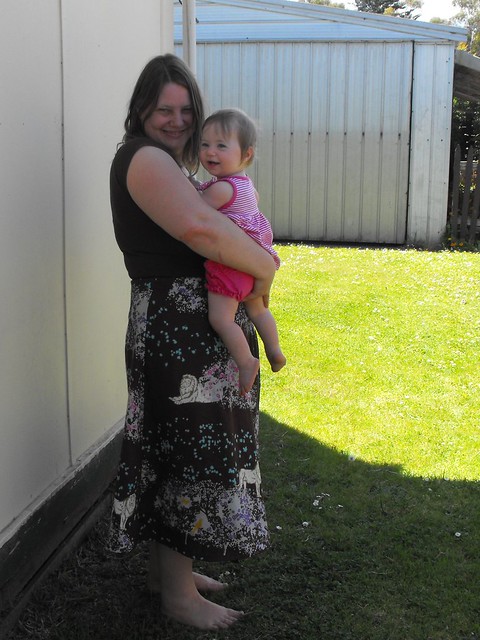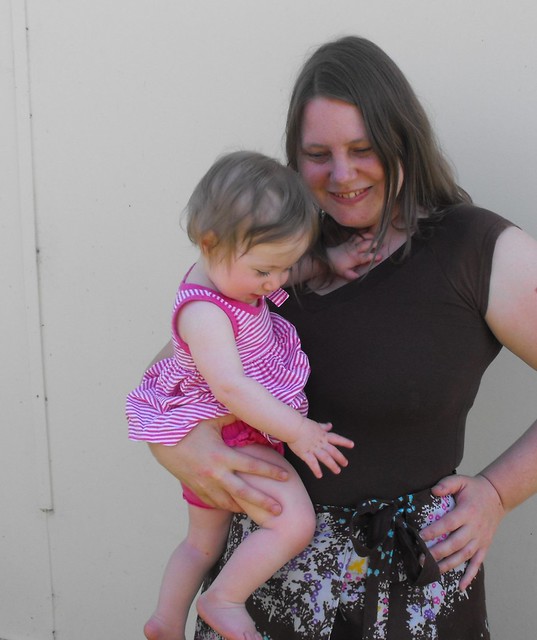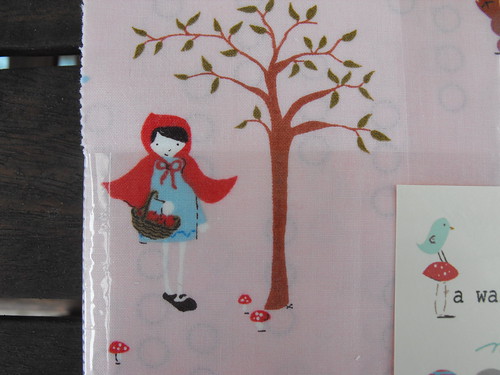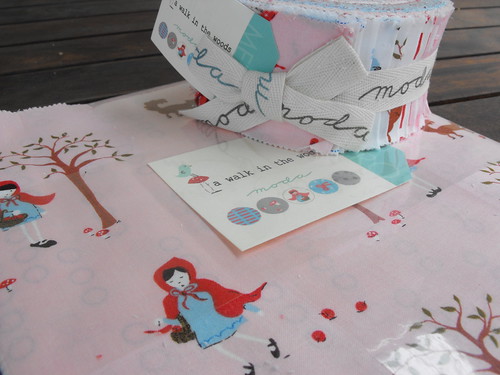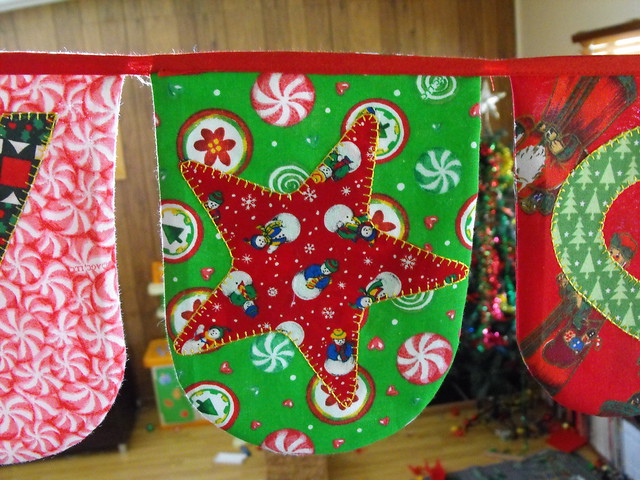
As promised, I am back with my appliqué tutorial. I will apologise in advance as it is very wordy and quite picture heavy. The appliqué I am showing you is part of my
Christmas bunting project.
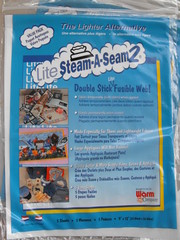
To appliqué following this method, you will need some fusible web. I like to use Lite Steam-A-Seam 2. Steam-A-Seam 2 is a double sided fusible web, sandwiched between two sheets of paper. It is designed particularly for lightweight fabrics.
There are heaps of similar products on the market you could also try. I prefer Steam-A-Seam 2 because the paper backing stays on well, and the webbing sticks lightly to the fabric before you press it with the iron, so things stay put a little better but you are still able to re-arrange things before you permanently affix it to your work with the iron. This makes fussy cutting and appliqué positioning very easy.
I purchased my Steam a Seam 2 from
OzQuilts.
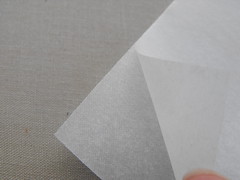
If you peel away a corner, you will see that between the two layers of paper, there is a layer of fusible web. This web will be sticking to one piece of paper more than the other. This is the sheet that you want to trace onto, as the other sheet will be peeled away.
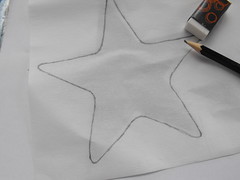
You will need to trace a mirror-image of the final appliqué because this will be sticking to the back of the fabric. One thing that you can do, is trace it the right way around on the paper that you will be peeling away, and then trace that line onto the liner with the fusible web on it.
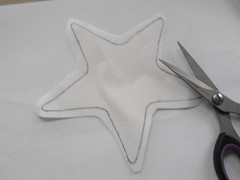
Once you have traced your design (remembering that it needs to be back to front and on the paper that will be peeled away first), you need to roughly cut out your design, leaving some excess paper around the edges. This will ensure that you will have webbing right to the edges of your applique.

Press the fabric that you are planning to use for your appliqué design. Press it from the back, so that you don't have to flip it over and you can then keep it flat, ready for the webbing.

Peel away the backing, ensuring that your traced design stays on the paper that is still attached to the webbing. Peel away carefully, so that if you notice the webbing is attached to the wrong sheet of paper, you can fix it before it's too late.
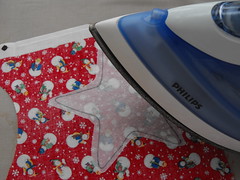
Position the webbing so that you are happy with the placement of the fabric within your design. If you are using fabric with a large motif, or a design that has a definite right-side up, then you might want to move it around a bit until you get it right. The webbing will stick a little, but is easily lifted and moved around. Once you are happy, give it a good press with the iron to bond the webbing permanently with the fabric. A good 10-20 seconds on cotton setting with some steam ought to do it.
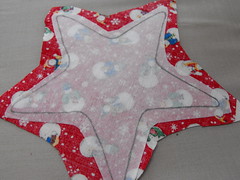
Roughly cut away the fabric with the design on it, ensuring that you keep all of the paper intact. You can now store away the remainder of the fabric, knowing that there is no sticky webbing left on it to ruin your next project, or make a mess of your iron.
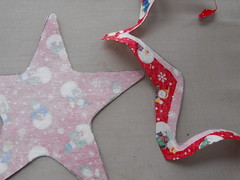
Now, trim away the excess fabric, carefully following the outline that you traced on the fabric.

And throw the waste edges into your over-flowing bin. Your bin is over-flowing, right? Mine is. It's also sitting up on a table right now, away from small children who like playing with fabric scraps.
Give your main or background fabric a good press, this time from the right side, as we want a nice smooth surface on which to place our appliqué motif.
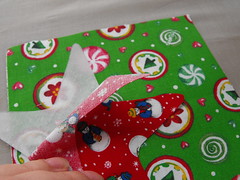
Peel away the backing from your motif, ensuring that the sticky webbing is adhered to the back of the fabric.
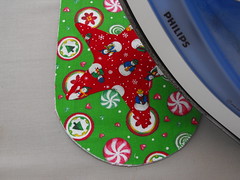
Place the appliqué motif face-up, on the backing fabric, moving it around as before until you are happy with its position. Give it a good press with your iron to bond the appliqué permanently to the fabric.
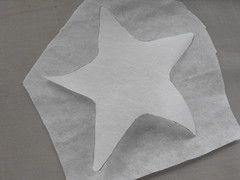
Take some tear-away stabiliser, larger than your motif, and place it on the back of the fabric. You might like to hold the fabric up to your sewing machine light, or a window (during the day-time) to make sure that the stabiliser covers all the edges of your motif.
According to the instructions that came with the Steam-A-Seam 2, the paper backing can also be used as a stabiliser. I have heard of other people using baking paper as well.
Stabiliser is used to keep your fabric nice and stable whilst you stitch it.Without stabiliser, your fabric can stretch and skew and warp out of shape. You want your fabric to stay nice and flat and not become a lumpy, bumpy, three dimensional mess when you're finished.
There are different kinds of stabilisers, some can be ironed on so that they don't move at all whilst you are stitching, some can be disolved away with water and are great for things like lace making. The one I use can be torn away when I'm finished so that the fabric returns to its original, flexible shape once it is finished.
Choose a nice, decorative stitch on your machine. I chose to use blanket stitch. When I was looking to replace my sewing machine, a year and a half ago, blanket stitch was highish on my list of priorities. This is the first time I've really used it since I tested it before and after I purchased the machine and I'm pretty happy with it.
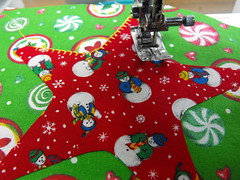 Test the stitch
Test the stitch on a scrap piece of fabric before you start sewing on your design. I used some nice shiny machine embroidery thread on my design, along with a bobbin thread that I normally would use on my embroidery machine.
When I tested my stitch on the scrap fabric, I decided that it needed to be wider, so I made that adjustment. I also found there were a few loopy bits of thread from the back showing on the top. I loosened off my top tension a little, and this fixed the problem.
Now, flip your fabric to the right side, with the stabiliser underneath and the appligue on top, and get stitching!

You will need to be careful when you are turning corners with decorative stitches like blanket stitch, my machine does a series of stitches like forward-backward-forward-left-right-repeat. You really need to be stopping and pivoting, with the needle down both before
and after it does the left-right bit so that it makes a nice neat turn.
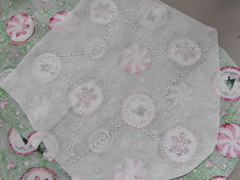
When you flip your fabric to the back, you will see your stabiliser all nicely stitched to the back of your design. Hopefully, everything is all neat and tidy like mine is here.
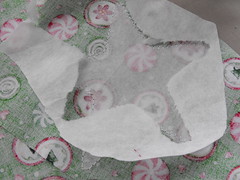
You can now carefully tear the stabiliser away from the outside edges of your design. You can tear it away from the inside edges too, if you like. If you used paper, and you are planning to ever wash the finished project, I would strongly recommend that you do remove it all.
Your appliqué is now complete - now you can get on with the rest of your project!
Please let me know if this tutorial is useful to you, or if you have any feedback. I would love to know what you think.

